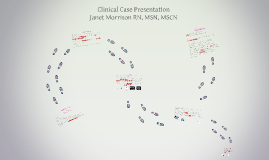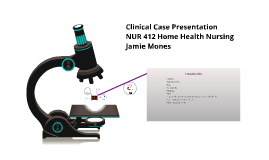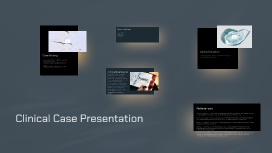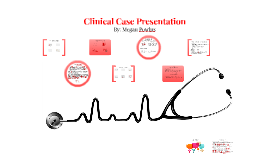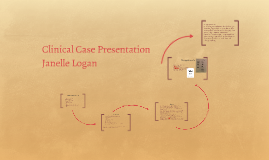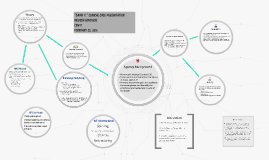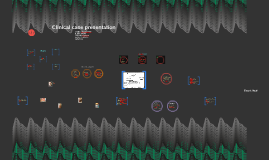Clinical Case Presentation
Transcript: Priority Nursing Diagnosis Taylor Laboratory Values ARB Fetopathy Nursing Diagnosis Gain weight get to 10kg to get on kidney transplant list! Strengthen muscles to reach developmental milestones Songs of Love Foundation Detroit Specialty Center -> Outpatient Therapy Complications were more severe and more frequently noted in children prenatally exposed to ARBs throughout the entire pregnancy. Women of childbearing age should be educated on the effects of these drugs during pregnancy and they should only be used if absolutely necessary. Quality of life patient will have to continue dialysis until she can get a kidney transplant QOL will be greater with a transplant Affect her growth and development Palliative care Beneficence -> to do good Non-maleficence -> to do no harm Truthfulness -> be truthful about the pts condition and treatments Autonomy -> respect the grandparents wishes Legal Guardianship -> grandparents Midnight Temp: 36.9 HR: 153 Resp: 32 BP: 112/61 O2: 99% Spiritual & Cultural QUESTIONS? Vaccines -> Rates of vaccination against influenza in the pediatric ESRD population have improved, but remain below recommended levels (Carson, 2012). Clinical Case Presentation Risk for electrolyte imbalance r/t end stage renal disease. Patient Assessment Medications Plan of Care Outcomes: 1.) By the end of the shift, pt will remain free from s/s of infection 2.) By discharge, caregivers will be able to identify s/s of infection and demonstrate how to take the pt's temperature Interventions: Assess temperature and observe skin for redness & warmth Hand hygiene Cluster nursing care to decrease number of contacts with pt Educate caregivers on the importance of hand hygiene in preventing infections Educate caregivers how to monitor the pt's temperature Encourage vaccinations Evaluation: 1.) Outcome met -> pt remained afebrile and free from s/s of infection throughout the shift. 2.) Outcome met -> Caregivers verbalized s/s of infection and exhibited how to monitor the pt's temperature Economic & Social Factors Delayed growth and development r/t effects of chronic disease (ESRD) & long periods of hospitalizations since birth AEB difficulty in performing skills typical of age group and altered physical growth. Anemia in Chronic Kidney Disease (2014). In National Institute of Diabetes and Digestive and Kidney Disease. Retrieved March 19, 2016, from http://www.niddk.nih.gov/health-information/health-topics/kidney-disease/anemia-in-kidney-disease-and-dialysis/Pages/facts.aspx. Bullo, M., Tschumi, S., Bucher, B., Bianchetti, M., & Simonetti, G. (2012). Pregnancy outcome following exposure to angiotensin-converting enzyme inhibitors or angiotensin receptor antagonists: A systematic review. Hypertension, 60, 444-450 Carson, R. (2015). 2015 USRDS annual data report. In United States Renal Data System. Retrieved March 19, 2016, from http://www.usrds.org/2015/view/v2_08.aspx. Cho, M. (2013). Clinical approach to quality of life in children with end-stage renal disease. Korean Journal of Pediatrics, 56(8), 323-326 End stage renal disease (ESRD) in the pediatric patient (2015). In Carolinas HealthCare System. Retrieved March 20, 2016, from http://www.carolinashealthcare.org/documents/ACEModules/ACE_ERSDPediatricPatient_FINAL.pdf. Hyperparathyroidism (2016). In Mayo Clinic. Retrieved March 20, 2016, from http://www.mayoclinic.org/diseases-conditions/hyperparathyroidism. Plazanet, C., Arrondel, C., Chavant, F., & Gubler, M. (2014). Fetal renin-angiotensin-system blockade syndrome: Renal lesions. Pediatric Nephrology, 29, 1221-1230. Richards, C. (2016). Pediatric renal transplantation. Nephrology Nursing Journal, 43(1), 35-37. 8:00 p.m. Temp: 36.4 HR: 159 Resp: 42 BP: 120/70 O2: 96% Social Work Nephrology Nutrition PT/OT Medicare Smoking -> Grandfather smokes outside the house Mom Dad is not in the picture No siblings Grandparents are the legal guardians Referrals & Community Resources Diagnostic Tests M.W. has hemodialysis M, W, F & some Saturdays No wet diapers, but regular BM On room air She has a G/J Tube placed G tube to dependent drainage J tube is for medications & feedings of special pm 60/40 formula at 44 mL/hr She is on continuous pulse ox and CR monitoring, as well as strict I&O's Risk for infection r/t chronic disease, presence of central venous catheters, & hemodialysis. CBC: WBC 24.8 ( ) RBC 2.63 ( ) Hgb 7.2 ( ) Hct 24.0 ( ) Platelets 228 Na, K, and Phosphorous are within normal limits. Ca level increase could be attributed to her hyperparathyroidism (too much PTH secondary to the kidney failure). The kidneys are damaged, so they are not making enough Erythropoietin, which stimulates the bone marrow to make red blood cells. As a result, the bone marrow makes fewer red blood cells, causing anemia -> This is why the patient is receiving Epoetin alfa. BUN and Creatinine are normally removed by the kidneys, but since the kidneys are not functioning, these levels in the blood increase. References Community of Residence






